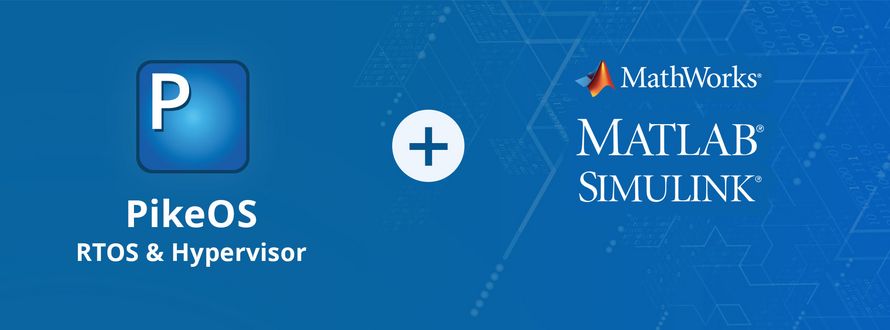Matlab's extension Simulink can now be used in combination with the real-time operating system and hypervisor PikeOS. This opens up some interesting possibilities for developers of complex systems.
Matlab Simulink is a graphical development environment for modeling, simulation and analysis of dynamic systems. It is mainly used in automation engineering, electronics, communication engineering and control engineering. One of the strengths of Simulink is the ability to create and simulate complex models in a graphical environment, which can significantly reduce development time. This is done with the help of graphical function blocks, whose implementation at source code level would otherwise take a lot of time.
PikeOS is a real-time operating system and hypervisor that specializes in functionally functionally safe, cybersecure, and reliable control of critical (embedded) systems. It provides strong isolation of applications and processes, as well as high reliability through its support of fault handling techniques such as the ability to use Fault Detection, Fault Isolation and Recovery techniques (FDIR). In the more general case, when subsystem failures are imminent, PikeOS enables the overall system to be engineered to keep critical components running. In addition, PikeOS' hypervisor functionality allows multiple operating systems to run on a single physical device.
Create Production Systems and Rapid Prototyping
The combination of Matlab Simulink and PikeOS offers many advantages for the development of critical systems. One of the most important advantages is the ability to run Simulink models directly or natively and with comparatively extremely shortened (because integrated into the development time) validation, verification, and testing phases on a real-time operating system. This allows validation of models early in the development process and ensures that the system meets requirements before it goes into production.
In addition, PikeOS allows multiple instances of Simulink models to run on the same physical device. This is particularly useful for developing systems with multiple diversified components, as the models of these components can be simulated independently.
The strong isolation of processes and applications in PikeOS also allows Simulink models to run safely and securely. This is particularly important for the development of systems used in safety-critical environments, such as aerospace and automotive. Isolation can ensure that a fault in a model or application does not propagate to other parts of the system, thus ensuring the safety and reliability of the overall system. Simulink's safety certifiability and PikeOS certifications in many industries such as automotive, avionics, rail, medical and others, greatly accelerate the development of embedded systems while saving certification effort and costs.
Hardware-in-the-Loop
Another advantage of using Matlab Simulink in combination with PikeOS is the ability to convert the model into a hardware-in-the-loop simulation. This allows the Simulink model to be connected directly to hardware components to simulate how the system interacts with the real world. This is particularly useful for control system development, as it allows control strategies to be adapted to the actual conditions of the system.
"Hardware-in-the-loop" (HIL) refers to the use of real hardware components in a simulation. In the case of Matlab Simulink and PikeOS, this means that the Simulink model is directly connected to the hardware that is actually used in the physical system. This allows simulating the interaction of the system with the real world and adapting the control strategies to the actual conditions of the system.
HIL simulations allow the control strategies to be tested in a safe and controlled environment before they are applied to the actual system. This enables early detection and correction of faults before they become a problem in the actual system. It also enables faster development of control systems because control strategies can be tested directly on the hardware.
Another advantage of HIL simulations is that they allow the performance of the system to be measured under realistic conditions. Since the model is directly connected to the hardware, the actual input and output signals of the system can be captured. This allows the performance of the system to be accurately quantified and the control strategies to be adjusted accordingly.
PikeOS Integration with the Matlab Simulink Toolchain
But what does the workflow look like? In order to create a Simulink model and turn it into an executable that runs natively on PikeOS, in addition to the graphical development environment, you also need the Simulink Embedded Coder and, in general, a 3rd party programming tool, or in our case, the PikeOS Toolchain. The Embedded Coder is a tool that allows Simulink models to be translated into native source code. This generated source code is then compiled via the PikeOS toolchain and the binary can then be executed directly in a PikeOS partition. The advantage of this is that the generated source code is quickly created for the hardware platform on which it will run and can also be quickly optimized for it via model customization, resulting in more efficient system performance.
In conclusion, the combination of Matlab Simulink and PikeOS provides a powerful, cost-effective, and rapid solution for critical systems development. The ability to run Simulink models directly on a real-time operating system, the support for virtual machines, and the strong isolation of processes and applications, can reduce development time and increase system safety and reliability.
More information at www.sysgo.com/pikeos

